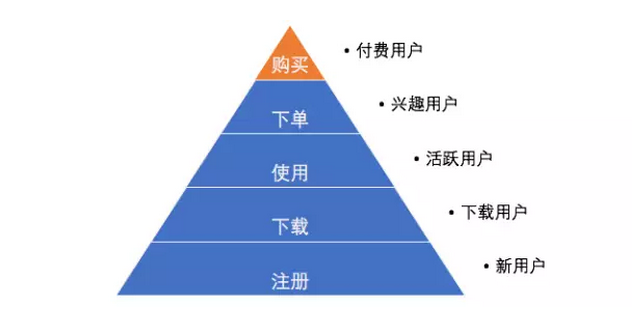Users hierarchical clustering and users are users into different categories, in order to distinguish between different users.
Layered user, based on the general direction of the division, the user grouping, these levels sucked cut into finer granularity.
Example hierarchical clustering users and user:

Users hierarchical method, simply use the Pareto rule stratification, a common user pyramid, user lifecycle, AARRR model. In fact, users no fixed hierarchical manner, usually set up a system based on local conditions product form. But there are two ideas can reference a division from around the evolutionary path to get the final conversion of the user, a user is around the nature of demand for the product division.
Press "from the user to get the final conversion evolutionary path" stratified:

Many users of the operating system there will be two layered structure, a double pyramid structure, a content production around, around a user's service:

In this structure, its core audience, a big fan of both content production and direction of large-V, but also the direction of consumption, they represent two types of operating strategy.
Users double-layered pyramid structure is not uncommon. With our well-known e-commerce, for example, that there are buyers, there are sellers. Currently fiery short video of both publishers have viewers live too similar.
Note that the user stratification, generally four or five structures on it, too much layering becomes complicated, not suitable for the implementation of operational strategies.
So if we are to carry out a finer division of how to do it? Then you should use the user grouping.
Grouping the users within the same level segmentation groups continue to meet the higher demand refinement. RFM model is a typical user clustering method.
Summary: Users hierarchical clustering and user is the basis for the refinement of operations, if the user is very large, then the time layering and grouping is not good enough, we need to further use user portrait.
